Genre: Racing Developer: AM2 Publisher: Sega Enterprises Players: 1-2 Released: 1994
Virtua Racing for Genesis takes us way back to the spring of 1994. The Sega Saturn has been launched in Japan and Virtua Fighter and Virtua Racing games have all of a sudden made the word “polygon” a household term and enhanced all the buzz about the “future of video games.” But Sega can’t help but keep tinkering with the Sega Genesis technology, always trying to maintain its existence and flex its potential while still doing something exciting with it that makes everyone say, “Wow, I can’t believe the Genesis can do THAT!” So, we have the now five-year-old Genesis taking on the impossible: porting a 32-bit game onto a 16-bit console. Although the Virtua Racing task seemed like a great way to get the new age polygonal racer onto your old system without having to pay a huge price for next-gen hardware, the result hampered sales because of many problems.
The Virtua Racing Genesis project was very exciting for SEGA, considering it would be the first game to make use of its new SVP microchip technology, which created spectacular 3D polygon graphics and provided faster speed in games when used together with the Motorola 68000 CPU at the heart of the Genesis itself. Included in every Virtua Racing cartridge was the program motherboard and one SVP chip. Unfortunately the cost of a new game combined with the value of the SVP chip forced SEGA to price the game at a minimum of $99. The price tag certainly turned off a lot of customers from getting Virtua Racing right away, but SEGA urged people to take part in this “history in the making” because the game was supposed to be incredible.
By today’s standards, the graphics have aged horribly, but even back then, they were certainly mediocre at best. The polygon visuals do move at a remarkably acceptable speed, but the limited color palette of the Genesis creates many low-hue pixelated textures, so the polygons are incredibly choppy. Also, the pop-up of polygons is so disappointing that whatever is up ahead doesn’t load up until you’re VERY close to it, making it very confusing sometimes to see what’s coming up, and making playing from the “driver seat” view virtually impossible.
Even worse, the bad color palette and the misshapen polygons make it very difficult to see other drone racers on the road. Some blue-colored cars completely blend in with the dark road, and I don’t have to tell you how angry it makes you to bump into a car, since it makes your vehicle come to a grinding halt and slowly spin around, allowing every car to pass you up. I mean really, the very laws of physics are incorrect in Virtua Racing.
The four viewpoints, brakes, and acceleration are all the same as the Saturn and 32X versions and work just as responsive and precise as you’d hope for. Steering the formula car is very hard to do at high speeds (but then again, that’s the deal with Virtua Racing on any system); however, once you can manage to get to know the tracks and get used to the somewhat bad graphics, the game can become somewhat enjoyable.
If you look at the later version of this game for the 32X, they added two extra tracks, two extra cars, some new music, and a special two-player mode. The Genesis, sadly, only has the original three tracks, and a time attack mode to race against the clock. Playing this game in the arcades, it’s easy to see that it was designed for casual gamers standing in an arcade to pass some time, but for a home game, three levels is pretty abysmal.
The Genesis graphics come off as ragged, but pretty decent for the aging system. With that in mind, I was apprehensive to see what the two-player split-screen mode would move like. But remarkably, it doesn’t feel any slower and is just as playable as the single player version. You will notice, however, that various polygon extras like the ferris wheel, see-saw, bleachers, and some trees have been removed from the courses to make it run smoother without slowing down. You don’t really miss them though since they weren’t so pretty anyway.
Virtua Racing was a great idea on paper, but all in all, I don’t think it was executed with any long-term success in mind. It was way too costly to create, the graphics were not very impressive, and they didn’t really add anything special to this version. In the end, the shortcomings of the Genesis just took away the speed, the color, and the sheer fun of this classic arcade game. I have to say, I’ve seen SEGA perform miracles in the past, but with this one, I was let down a bit.
Having said that, however, it is fair to say that this did look fairly good for its time and it’s clear that Starfox for SNES was what Virtua Racing was trying to counter. The Genesis certainly didn’t have a plethora of great racing games before this, and it does blow away most of the clunkers of the system’s past. Seeing as how it is playable and considered a piece of Genesis history, I wouldn’t advise against buying it, since it’s also quite cheap out there on eBay. Nonetheless, I do stress the irrefutable fact that the 32X version is far superior.
SCORE: 7 out of 10


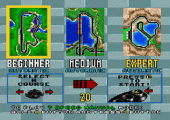
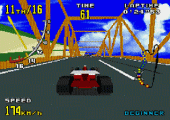
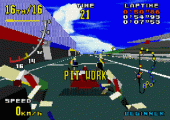
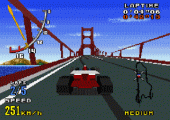

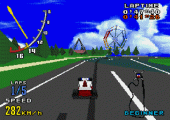
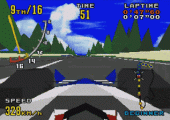
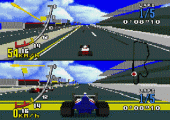
Agreed, as I had both versions too; the 32x version blows this one out of the water but I do like seeing this run on the Megadrive and the fact that used its currently around ten dollars, and I like to see that comical depreciation of the monetary that is so evident in the technology age of the last two decades.